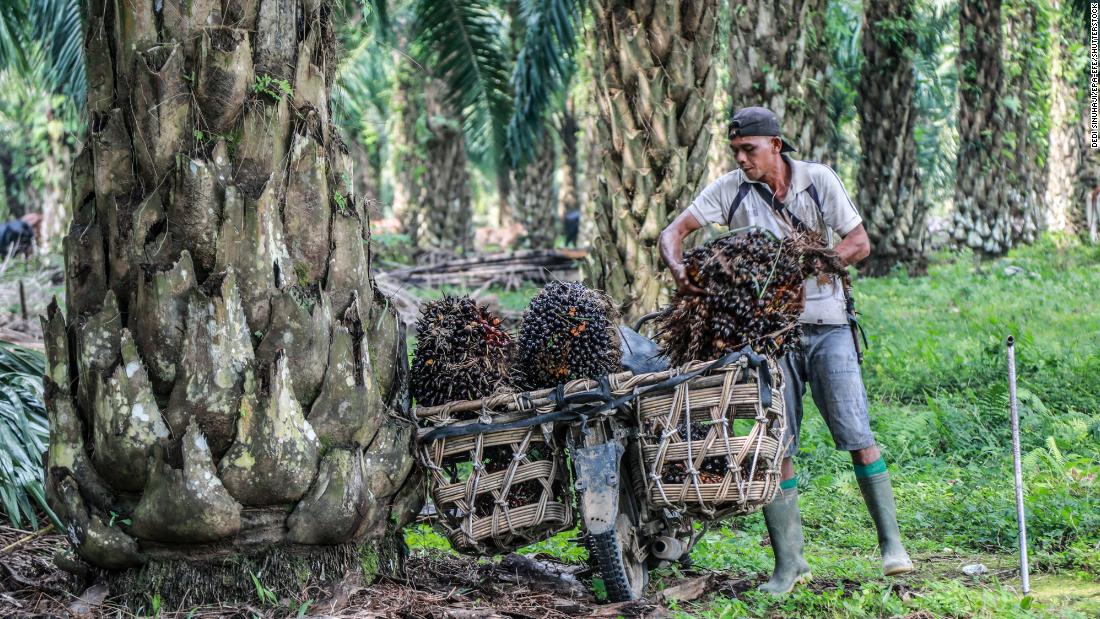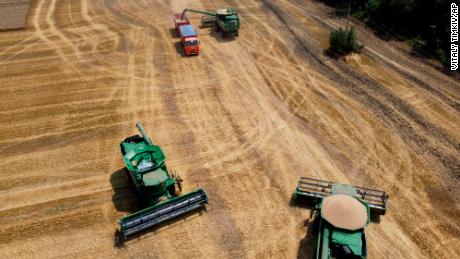
The Southeast Asian country is the world’s biggest palm oil producer, and Friday’s announcement sent prices of the commodity “berserk,” said James Fry, chairman of consultancy LMC International. Crude palm oil futures in Malaysia, a global benchmark, jumped nearly 7%.
But the restrictions are still expected to include palm olein, a more processed product which is used for cooking oil and makes up an estimated 40% to 50% of Indonesian exports, according to analysts. That would fuel inflation, just as global food prices hit all-time highs.
What is palm oil?
The commodity is also used for cooking in many countries, including India, the world’s top importer.
Fry said that the price of many pantry items, such as cooking oil, instant noodles, snacks, baked goods and margarine could rise when Indonesia’s curbs take effect.
“We’ve got the perfect storm,” he added, noting that other factors, such as droughts in South America and Canada, had also constrained supplies of soybean oil and canola oil, respectively.
Why is Indonesia taking this step?
The country had already taken other steps to protect local supplies. In January, it introduced a policy that required exporters of palm oil products to sell 20% of their total exports domestically, according to the US Department of Agriculture (USDA).
But the problem persisted, leading the government to take the drastic step last week to block exports.
Who makes the most?
Malaysia and Thailand follow with 25% and 4% of worldwide production, respectively. Colombia, Nigeria and Guatemala are also key producers.
Some analysts say Malaysia could help make up the shortfall, but it’s facing its own supply problems.
Sathia Varqa, co-founder of Palm Oil Analytics, an independent market data publisher, said that Malaysia had been suffering from a labor shortage since the pandemic.
“Inventories are also historically low” in Malaysia, analysts at JPMorgan wrote in a note Friday.
Other countries are feeling the pinch.
India, which relies heavily on imports of vegetable oils, has already felt the impact of the recent shortages, according to B V Mehta, executive director of the Solvent Extractors’ Association of India.
He told CNN Business that people were turning to other ingredients, such as rapeseed oil and peanut oil, in response to the surge in prices of sunflower and palm oils.
Mehta is lobbying the Indian government to increase its own production of such commodities because of the “crisis” in food security.
“High prices have already taught us in the last two years to raise our own products and productivity, and with the Ukraine matter and now Indonesia … [it] has taught us a good lesson,” he added.
Why is this especially bad now?
The Indonesian ban comes at a bad time for global consumers.
World food prices jumped to their highest levels ever in March, the Food and Agriculture Organization of the United Nations (FAO) said earlier this month. According to its report, “war in the Black Sea region spread shocks through markets for staple grains and vegetable oils.”
The most recent FAO Food Price Index — which measures the monthly change in international prices of a basket of food commodities — was 33.6% higher than in March 2021.
In their report Friday, JPMorgan analysts said that Indonesia’s export ban was “adding fuel to the fire.”
“This is yet another reminder of the vulnerability present across agricultural supply chains in an environment of already historically tight inventories, compounded by the indefinite loss of Ukrainian export volumes and historically high production costs,” they wrote.
In a way, the world had been relying on palm oil from Indonesia “to fill the gap” left by other disruptions — “and Indonesia suddenly blocked that flow,” Fry said.
— Anna Cooban, Claudia Dominguez, Livvy Doherty, Chris Liakos, Julia Horowitz and Jorge Engels contributed to this report.

